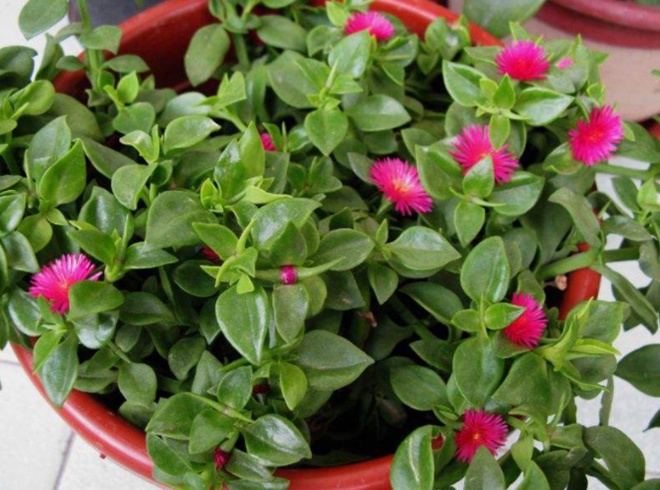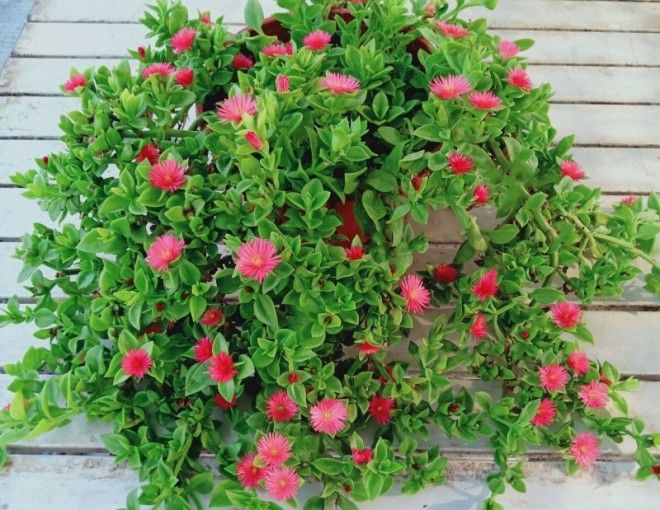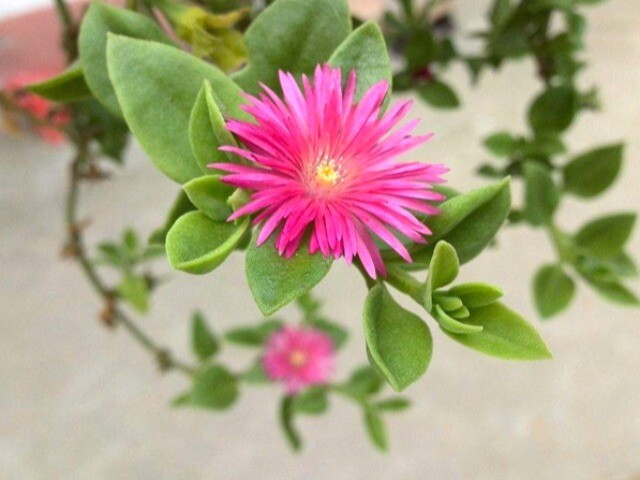The Peony Chlorophytum, or Peony Leaf, is an attractive and low-maintenance houseplant that adds a touch of greenery to any indoor or outdoor space. What sets this plant apart is its dual purpose as an edible crop, offering both aesthetic and nutritional value.
One of its distinctive features is its year-round lush green leaves, providing a charming accent to any corner of your home or garden. Peony Leaf typically blooms in July and August, but with the right care and ideal temperatures, it can also flower in winter and potentially bloom all year round. The small, delicate pink flowers usually last for about 2-3 days, opening during the day and closing at night, creating a subtle yet beautiful display among the green foliage.

Peony Leaf typically blooms in July and August
This versatile plant can be easily grown in pots and placed on tables, windowsills, or even hung in baskets on balconies, adding beauty to every nook and cranny of your home. Its flexible nature not only enhances your living space but also creates interesting focal points.
Apart from its visual appeal, Peony Leaf is also an excellent air purifier. Having a pot of this plant indoors not only cleanses the air but also contributes to the well-being of your family, creating a wholesome and pleasant living environment while improving the quality of the air you breathe daily. It is a perfect blend of aesthetics and health benefits for your home.
The appeal of Peony Leaf extends beyond its looks as it is also an edible vegetable packed with high nutritional value. Rich in vitamin C, folic acid, carotene, potassium, and magnesium, it provides essential nutrients to the body. Additionally, Peony Leaf contains powerful antioxidants, further boosting its health benefits.

Packed with Powerful Antioxidants
Incorporating this vegetable into your regular diet offers cooling and detoxifying effects, along with numerous health advantages. With its juicy, crisp texture and refreshing taste, Peony Leaf can be prepared in a variety of ways, including salads, soups, stir-fries, or even as a filling for steamed buns. The combination of flavor and nutrition makes it a delightful addition to your family’s menu.
Peony Leaf is extremely easy to propagate; simply cut a stem and place it in the soil, and within 7 to 10 days, it will take root. You can also use the hydroponic method for propagation, with spring and autumn being the ideal seasons for this process.

Easy Propagation – Simply Cut and Plant
One of the standout advantages of Peony Leaf is its natural resistance to pests and diseases, requiring minimal care. However, if you wish to encourage year-round blooming, consider the following factors:
– Soil: For vigorous growth and abundant flowers, use well-aerated, porous soil with good drainage. This promotes a healthy root system.
– Light: While the plant can tolerate shade and strong sunlight, it is best to place it in a bright spot if you want it to flower profusely. During summer, avoid direct sunlight as it may scorch the leaves. If you’re growing Peony Leaf solely for its edible leaves and don’t care about the flowers, a shadier spot will suffice.
– Watering: Due to its succulent nature, Peony Leaf doesn’t require frequent watering. Allow the top soil to dry out before watering thoroughly, ensuring the plant receives adequate moisture.
– Fertilizer: To boost the plant’s growth, apply organic fertilizer once a month. This provides essential nutrients for optimal development.
– Pruning: Regular pruning is essential as Peony Leaf has a strong propensity to sprout. Pruning helps maintain a healthy shape and encourages more vigorous growth.



































